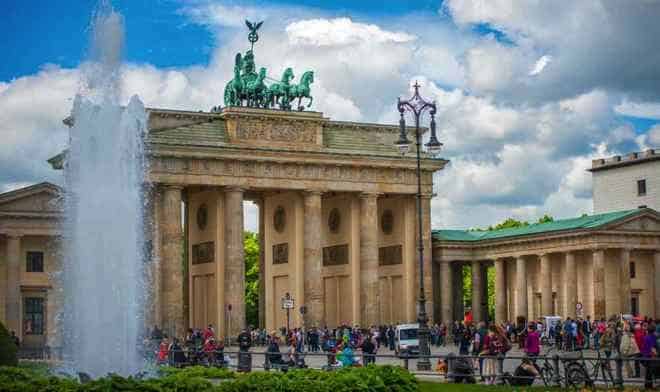The city of Berlin has undergone a transformation in urban agriculture over the past ten years, and is very active when it comes to fostering a wide variety of gardening and agriculture projects within the reunited city. The capital city of Germany, once divided by the Berlin Wall, has been growing together through urban gardening. Many of the projects are very light on the land, creating gardens that can be moved to accommodate the changes in land ownership that characterize a city that is rapidly growing. Food Tank highlights just a few of the many initiatives and locations in the city.
1. Prinzessinnengarten (Princess Garden) is a large agriculture undertaking located on Moritzplatz in the diverse city quarter of Kreuzberg. In the summer of 2009, hundreds of volunteers converted the square, a formerly empty and unused urban wasteland the size of a city block, into a highly productive vegetable and fruit garden. Local residents have maintained and expanded the garden in the years since, adding seven beehives to the square.
2. The project which launched Prinzessinnengarten is Nomadisch Gruen (Nomadic Green), which grows produce in burlap sacks and other reusable containers. These can be put on bike trolleys to set up gardens on unused space anywhere in the area, ready to move should the space be sold, rented or become otherwise unavailable.
3. The Allmende Kontor is an urban garden located on the grounds of the Berlin Templehof airport. Where planes once took off during the Berlin Airlift of 1948-49, local residents now grow fruit and vegetables.
4. Frisch vom Dach (Fresh from the Roof) is an aquaponics project due to start this year on the rooftop of a former malt factory in the Schoeneberg district. The planned farm will create a ‘symbiotic’ cycle of aquaculture with vegetable gardening, using the ‘nutrient-rich’ aquaculture water to irrigate plants. The growers, ECF Farmsystems, plan to sell the resulting fish and produce on-site.
5. Moerchenpark is part of the Holzmarkt stakeholder-run development, which is intended to be a village within the city along the banks of the Spree River. Moerchenpark offers a number of ways to get involved with gardening, including the construction of boxes for moveable gardening, beekeeping, garden design, and of course, urban fruit and vegetable gardening.
6. The Interkultureller Garten der Generationen in Wedding is a 300 sq. meter (3,200 sq. ft.) shared vegetable garden run by local residents from ten different nations. The initiative is based on Agenda 21, the non-binding, voluntarily implemented U.N. action plan for sustainable development. Located on the Schul-Umwelt-Zentrum (SUZ, School-Environment-Center) site of the Wedding Gardening School, it has grown side-by-side with a number of other projects, including an International School Garden, Nature with Migrants, and a Garden of Continents in which typical kitchen garden plants are grown from climate zones around the world.
7. Himmelbeet (Sky Bed) is based on the same concept as the Prinzessinengarten, a place for local residents to come together, turn unused urban space into a garden, and create vegetable and fruit gardens that can also be moved to accommodate changing land uses as the city changes and develops. The organic produce from the community garden section are sold on-site, and proceeds go toward cultural events and re-investment. Eager city gardeners (there’s a waiting list) pay € 50 (USD 70) per season to have their own private corner of gardening heaven.
8. Mauergarten (Wall Garden) is an urban garden situated in the Mauerpark, on the former site of part of the Berlin Wall. As much an intercultural and community initiative to support cooperation as it is a place to grow vegetables, the garden was established in 2013. It consists of over 50 raised beds, and is open to local residents for community gardening.
9. No overview of Berlin’s urban agriculture would be complete without mentioning the city’s long-established Schrebergaerten, the numerous ‘allotment gardens’. These community gardening areas, some of them quite large, were first created over 150 years ago as a means of supplementing the weekly soup pot. But the real allotment garden movement focused on the benefits of fresh air, physical education and bringing city children closer to nature. During and after the two World Wars, the allotments were important subsistence gardens, and the garden cottages on them were used as homes. There are currently over 800 allotment garden complexes in the Berlin area.
10. Bauer Mette, run by Walter Mette, is a farm that has remained in the same location for six generations while the city of Berlin grew around it and enclosed it. It is one of a handful of traditional farms that still exist within Berlin city limits. Adjustments in the traditional farming routine have been made to allow city dwellers to participate in farm life and learn more about how their food is produced. The farm produces various cereals and produce types, and raises a variety of livestock, including old cattle breeds. Most of the farm’s produce is sold within Berlin city limits.







